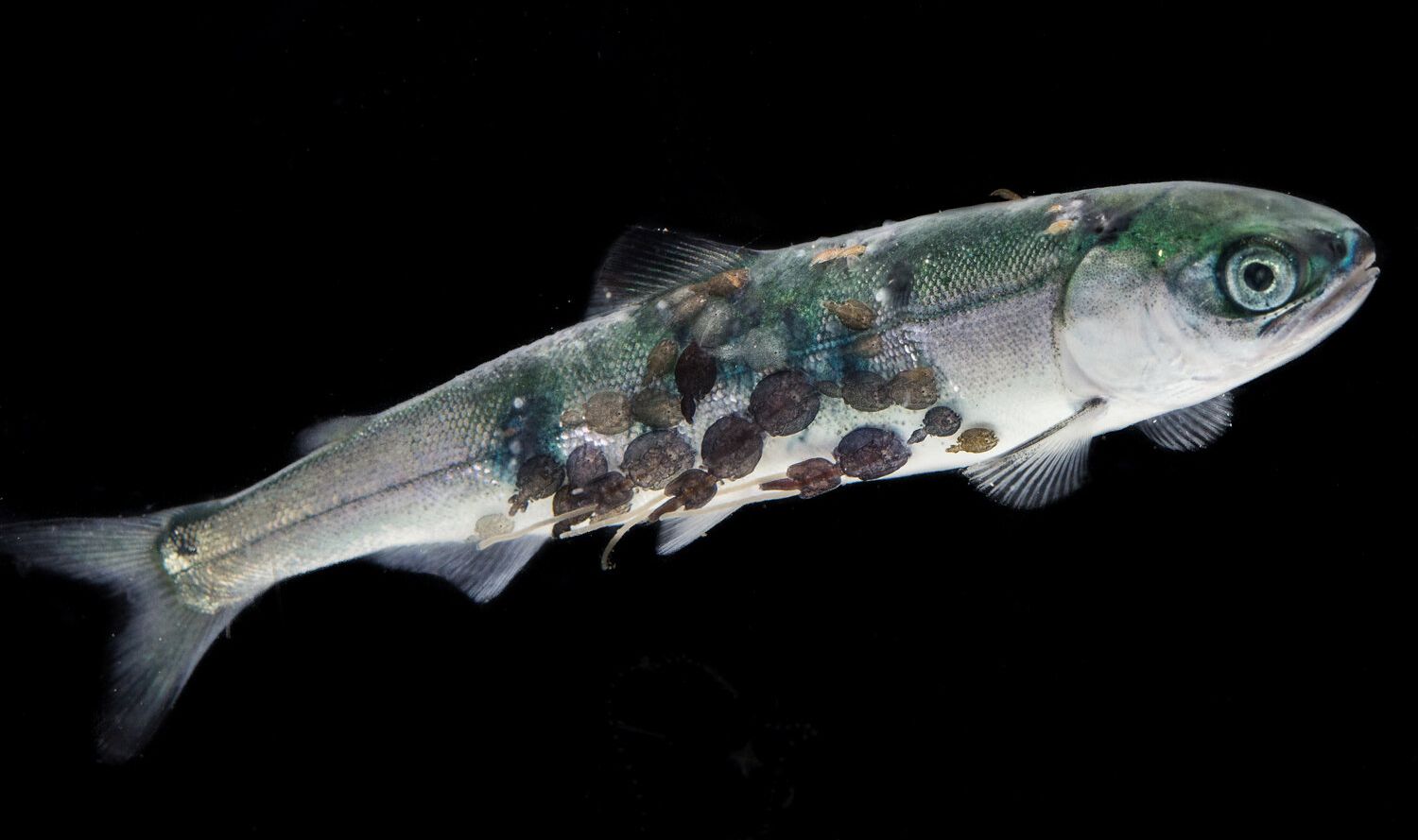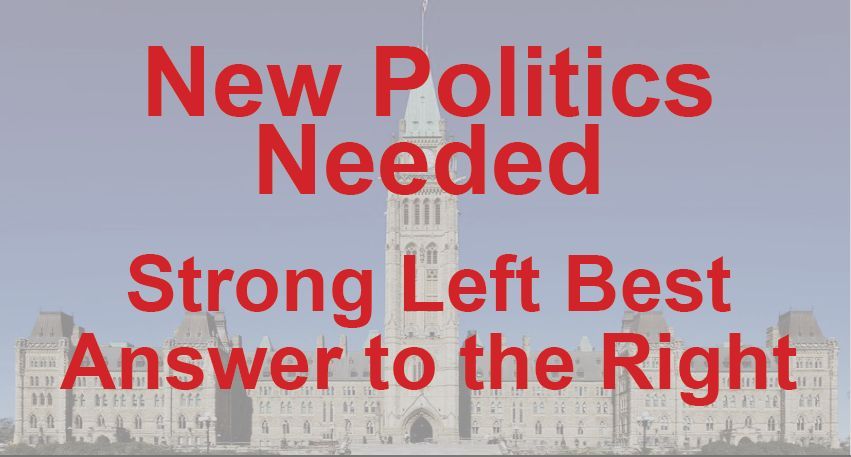Aquaculture, Mismanagement and Climate Change
In 2020 the Fraser River sockeye salmon run collapsed. This catastrophic and historic collapse is a real existential emergency for these fish and the people who rely on them. This follows a series of record-breaking bad years.
Between 1980 and 2014, sockeye returns in the Fraser River fluctuated between a minimum of 2 million to a maximum of 28 million, with an average of 9.6 million. But at the start of the 2020 season, scientists at the Pacific Salmon Commission predicted there would be only 941,000 sockeye returning to spawn that year. This already would have been shockingly low, but by the end of the year only 293,000 made it back to their spawning grounds. That represents a 97 percent decline from the pre-2014 average!
There are a number of factors that contributed to the dismal situation for sockeye in the Fraser River, at least one of which was arguably outside of human control. Sometime in 2018, massive chunks of rock slid into the Fraser River north of Lillooet. Referred to as the Big Bar landslide, the rocks made the river impassable to migrating salmon. At the time the slide was discovered in 2019, Department of Fisheries and Oceans (DFO) scientists declared that it could represent a meaningful chance of extinction for some salmon runs.
While the Big Bar slide was devastating, and a major factor in the scale of the 2020 return, it only affected one part of the Fraser’s watershed and does not explain the decade-long decline. Three of the last five years of sockeye returns have been new record lows. In 2019, the return was only 485,000, which at the time was the lowest since records began in 1893. The systemic causes of the crisis are the destructive aquaculture industry, a lack of interest in conservation from the DFO, the global climate crisis, damage to streams and spawning grounds, and ultimately the capitalist economic system that makes all of them possible.
Aquaculture in Canada
The history of the aquaculture industry (salmon farming) in Canada is a history of corruption, hypocrisy, and a destructive exploitation of the natural world. These privately owned farms consist of a series of pens made of net suspended in the ocean in which recently hatched fish are grown to maturity. Each pen, depending on its volume, can have anywhere from 10,000 to 70,000 fish packed in. From the surface they look like a cage of boiling fish. There can be four mature salmon in a cubic metre of water. This density is ideal breeding grounds for disease and parasites like sea lice. Salmon infected with sea lice form lesions that make them unsuitable for consumption, and since the farm pens are completely permeable with the ocean, the lice spreads to wild salmon, which can kill them.
Since commercial aquaculture got started in Canada in the 1970s, it has always been framed as a way to exploit the natural environment for profit. According to the Government of Canada’s website in 2011, “Aquaculture is a natural choice for Canada. Not only does Canada have the world’s longest coastline… it also has the largest freshwater system and the world’s largest tidal range.”
The Government’s website brags of the value of the industry to the economy, but the ability of these farms to be profitable is largely dependent on their ability to externalize the costs of waste. That’s why they use permeable nets as pens: the feces and lice-infested water is allowed to wash away into the open ocean without the owners having to pay for waste removal. The wild salmon are swimming through the fish farms’ toilets.
Commercial aquaculture operations were originally identified as “farms” in Canada to avoid them being regulated as a fishery and to place them under provincial jurisdiction. In 2009, biologist Alexandra Morton led the charge in a court case against the BC government to challenge this classification. The court agreed with Morton’s argument that open-pen fish farms, by virtue of being literally in the same ocean water as wild fish, are indeed a fishery and therefore federal responsibility.
But since then, the various federal agencies responsible, including the Department of Fisheries and Oceans and the Canadian Food Inspection Agency, have gone out of their way to downplay the risks of salmon farms to wild salmon stocks. The DFO requires the salmon farms to count the sea lice, but this is self-reporting and there is strong evidence the farm bosses constantly under-report. These agencies have lowered regulations on sea lice and allowed diseased fish to be transported into the farms, despite repeated warnings from scientists and protests from First Nations groups.
This is not just a matter of interpretation. DFO’s own 2002 Aquaculture Policy Framework states that it has a mandate to promote and assist the aquaculture industry! It thus finds itself in the position to be regulating the safety of an industry while also being charged with helping it stay profitable. And it’s not hard to see which of these mandates DFO takes more seriously as it built a special Aquaculture Management Division to support the industry, but it has no equivalent division or office tasked to oversee the health of wild salmon.
The Cohen Commission and the Discovery Islands Dispute
In 2009, the Cohen Commission was formed to investigate the decline of sockeye salmon stocks in the Fraser River. It published its findings including 75 recommendations in 2012. Among its findings were that DFO had been aware of the decline and possible causes but had taken little action to collect data or investigate what to do about it. While the commission did not conclude that salmon farming was a problem per se, it recommended that DFO’s mandate to promote the industry be rescinded and that the department should study the effects of aquaculture on wild stocks and then create regulations to protect them.
The commission specifically called out the farms around the Discovery Islands on the north coast for investigation. The young salmon swim from the Fraser River past these islands, and their pollution, to the Pacific Ocean. One of its recommendations was that if the Minister of Fisheries determined there was “more than a minimal risk” to wild stocks from the farms by September 30, 2020, that those farms should be phased out. In December 2020, in a decision that appeared to mark a sharp change in the status quo, the federal Minister of Fisheries Bernadette Jordan, after consulting with several First Nations governments, decided to declare that the licences of 19 of the salmon farms in the Discovery Islands would expire in 2022.
In fact, it appears that the minister and the DFO may be working at cross purposes. Thanks to the efforts of Alexandra Morton and her use of the Access to Information Act, it is clear that Minister Jordan did not even have crucial information known to DFO when she made the decision to phase out the Discovery Islands farms. The DFO’s own scientists had discovered a build-up of bacteria causing mouth-rot in salmon in the waters around the islands, and the data showed an 87.9 percent reduction in the survival of young sockeye. But they never communicated this information to the Minister (their nominal boss). But they did send it to the Salmon Farmers Association, which represents the farm owners, presumably to help them defend against possible accusations. It does seem that the Minister made her decision to phase out these farms based on consultations with First Nations, and despite the DFO itself hiding evidence that could represent an existential threat to sockeye salmon in the Fraser River.
But of course, these fish farm owners will not take this blow against their profits without a fight, and they appear to have won the first skirmish. As part of her announcement that the fish farm licences would expire in 2022, Minister Jordan declined to grant permits authorizing the transfer of more fish stocks to the farms. The salmon farm owners sued the federal government and won an injunction from the court to block the Minister’s decision to not grant permits. Justice Peter George Pamel argued “the harm to [the fish farm companies], as well as their employees, their families and other businesses in the community, in particular First Nations businesses, will be real and substantial if the injunction is not granted.” Of course, the throw away appeal to “their employees” by Justice Pamel is purely cynical. The primary concern of the court is the protection of property rights, i.e., the right of the bosses to make profits.
The lawyers for the federal government argued in their defense that any financial hardship felt by these companies should be considered self-inflicted. They should have had time and sense to come up with a contingency plan in the nearly 10 years since the 2012 Cohen Commission recommended the Minister consider phasing out these farms. But the judge disagreed, saying, “It seems to me that applicants should be able to know what to expect when they engage in a regulatory process, especially where, as is here, there is a significant investment in time and financial resources.”
Indeed, it’s clear that in our neoliberal society all risk to private business is nationalized while all their profits are privatized. Remember, these businesses are only profitable because they push the cost of dealing with their environmental destruction onto the rest of society!
Now, as it happens, the minister has a constitutional right to grant or not grant fish transfer permits at her discretion, meaning the courts cannot force her to issue the permits. The injunction was granted with the arcane reasoning that the refusal to grant the permits was part of a policy change from the Ministry, rather than a regulatory decision. So, the minister can still decide not to grant the permits, as long as it’s not based on her already stated intention to phase out the farms. What nonsense! When bourgeois courts and politicians start arguing about what thoughts a person is allowed to entertain in their heads while making a decision, they become indistinguishable from medieval theologians arguing about transubstantiation.
Mismanagement
While the DFO falls over itself to protect the profits of the salmon farming industry, even as the attempt of its rogue minister to regulate it is blocked by the courts, the federal department shows little interest in managing and conserving wild salmon stocks. It’s not even gathering the data necessary to understand the problem. The only way to know how many salmon return to the streams where they were born is to hire people to go out there and count them. These people are called creekwalkers, and in 1949 there were 150 of them monitoring the streams of the north coast of BC. Today there are only 2. In the 1980s, about 1,500 out of 2,500 spawning streams were being monitored on the central and north coast. Today it’s only 215.
These decreases are due to DFO continuously cutting funding for monitoring since at least the 1980s. Instead, they rely more and more on modeling populations based on a few measurements of larger streams. But according to Michael Price, salmon researcher at SFU, these estimates can be off by as much as 50 percent. The information collected by creekwalkers is crucial for making informed decisions about conservation. Incorrect information can have devastating effects on salmon stocks. In 2020, pink salmon were badly overfished because the DFOs predictions about their health were way off.
Indigenous groups and conservationists have been demanding bolder action from DFO for years to address the obvious decline in sockeye salmon stocks. When the scale of the collapse in 2020 was revealed, the First Nations Leadership Council of BC called on the federal government to declare the Fraser River exhausted. They are also calling for local First Nations to manage the fisheries as part of their constitutionally recognized rights and title to the land.
It’s not just a question of managing fisheries of individual species either. The DFO is not thinking ecologically about how different species and environments interact with each other. Herring is a critical species lower in the food chain and having a healthy herring stock is necessary for having a healthy salmon stock. But according to recent DFO estimates, the Pacific herring mass in the Strait of Georgia has dropped over 60 percent in just four years, from 130,000 metric tons in 2016 to only 54,000 metric tons in 2020. The DFO has set quotas for herring and says that the stocks are healthy. Yet, according to Scott Wallace of the David Suzuki Foundation, the allowable catch rate set by the DFO is too high and is calling for it to be cut in half.
According to Wallace the herring stocks in the Strait of Georgia are becoming less distributed through the zone, and no one is exactly sure why. In fact, groups like the Squamish Streamkeepers, scientists, and First Nations are actively trying to restore herring stocks to areas where they were once common. In particular, Coal Harbour used to be a spawning ground for herring and provided an abundant food supply for local Indigenous people. All these efforts to restore herring stocks are taking place without any assistance from the DFO and despite its decision to allow a commercial herring fishery this year.
Climate Change
Wild salmon are being hit by more than fish farming and government mismanagement. The crisis in the global climate plays a big role. Climate change is responsible for long-term warming of river and ocean temperatures. Warmer rivers and streams hurt the salmon population and cause salmon to migrate to the ocean earlier than usual and so miss food supplies. Warming water temperature creates small but important shifts in ecology that has compounding impacts. For example, warmer waters mean more natural predators like seals and sea lions move up the coast, and warmer waters reduce important food supplies like zooplankton.
Recently, scientists have discovered that the effects of warming water temperatures on ecosystems could be even worse than predicted. Previously models had assumed that temperature increases would be gradual and evenly distributed throughout the ocean. It is now clear that sometimes “blobs” of extra-warm temperatures can form in the ocean, and these can have devastating effects on ecosystems that last even after the blob has dissipated.
Starting in 2014 and lasting for two years, a blob of warm water formed in the north Pacific with temperatures as much as 4 degrees warmer than normal. Even though this blob has dissipated, it will take years for the salmon to recover. According to climate scientist William Cheung from the University of British Columbia, modelling predicts that there could be four more blobs before the end of the century.
While climate change might not be the responsibility of any individual industry or government regulator, the capitalist system is responsible for climate change. As Socialist Alternative has argued, the system of production for profit inherently leads to environmental destruction despite any attempts, good faith or otherwise, to regulate it.
Logging and Industry
Logging in the headwaters of salmon rivers contributes to raising temperatures, as forest cover is removed. Salmon need clear gravel to spawn, but logging and road construction increases soil run-off which carries silt into the streams and covers the gravel.
The mouth of the Fraser River is a major port with industry and large freighters – the salmon have swum this gauntlet twice in their lives: first to reach the ocean and then to return to their place of birth to spawn. The Port of Vancouver, a federally owned and regulated agency, wants to build a new container terminal close to the river’s mouth. The port on the Fraser River delta is also the largest exporter of coal in North America.
To add to the salmons’ woes, the Canadian government wants a major bitumen pipeline to end in Vancouver to feed 400 tankers a year. It is amazing any salmon survive the attacks they suffer.
Relief for Workers and Production for Need not Profit
It seems obvious, that after a catastrophic collapse in 2020, itself being the latest in a string of record-breaking bad years, and with scientists, conservationists, and Indigenous groups calling for drastic action to further restrict or close fisheries in order to allow the ecosystem to recover, that the government should be taking drastic action, and yet they’re not. This contradiction gets to the heart of the problem: production for profit as contrasted with production for human need.
Workers in the commercial fishing industry are suffering as climate change and government mismanagement are causing continuous declines in stocks. As Joy Thorkelson, president of the United Fishermen and Allied Workers’ Union, said in 2019: “The impacts are on fishermen, plant workers, net menders, and reduction plant workers, from Lax Kw’alaams all the way down to White Rock and all the places in between.” Anglers are reporting that their catch can’t even cover their fuel and provision costs. The union is asking for disaster relief for workers, and a longer-term climate adaptation plan.
The workers absolutely deserve disaster relief. They had no say over the poor management of the fisheries over the last decades, or in the global waste and overproduction causing climate change. But rather than provide this relief, the government would rather use the plight of workers as a cynical ploy to explain why they can’t take drastic measures to allow ecosystems to recover. They point to the small communities, including Indigenous communities, who rely on work in the fishing industry to support themselves, as the reason that they have to keep the fisheries open and regulations loose. The courts use the same rhetoric, as we saw in Justice Pamel’s appeal to the plight of the employees in the decision over the Discovery Islands transfer permits.
The government and the courts don’t really have any concern for workers, only the profitability of the businesses. Our collective experience of the COVID pandemic is enough to attest to this. Governments jumped immediately to provide money to big businesses even as they laid off workers. Relief for individuals was cut off the minute it became politically expedient, even as the pandemic raged on with second and third waves much worse than the first. The government and the courts only care about workers to the extent that they are necessary to create the profits for their bosses. Suppose the bosses of these companies could find a way to fire half their workforce while maintaining profitability: do you think these institutions would have anything to say about the employees then?
This is of course the nature of the capitalist system. It is a system of production for profit rather than production for human need. Under capitalism fish are not caught in order to provide a food source. They are caught because they can be sold on the market for a profit. And if you can make a profit catching and selling fish, then you must catch as many fish as you possibly can, regardless of the human need for fish or the long-term effects on the ecosystems. Conservation efforts by a capitalist government, whether Liberal or Conservative, are not fundamentally aimed at protecting the ecological health and stability of the environment, but in protecting the long-term profitability of commercial fishing companies.
History shows that the federal government can and will allow a fishery to be destroyed in the interest of short-term profitability. At one stage the cod on the East Coast were so plentiful fishers lowered baskets and hauled up the fish. But after mismanagement by the federal government, the cod have virtually gone. Will the DFO do the same to the Pacific salmon?
It doesn’t have to be this way. Since time immemorial, Indigenous people have fished sustainably all up and down the BC coast. Salmon was the basis of life for the many varied communities on the coast and in the interior and ensured a rich culture. The problems of modern fisheries are not an inevitable consequence of progress or “modernity.” The development of technology to catch fish more easily and efficiently than in previous generations does not necessarily go hand in hand with overfishing and destruction of ecosystems.
The problem is not the catching of fish, but the catching of fish for the purposes of profit rather than human need. A democratically planned fishery run by workers and First Nations could provide a sustainable supply of fish for human consumption that would have no need for the destructive excesses of the market. While this vision is achievable, the tasks necessary to accomplish it cannot be underestimated, because they get to the very heart of the capitalist economic system.




